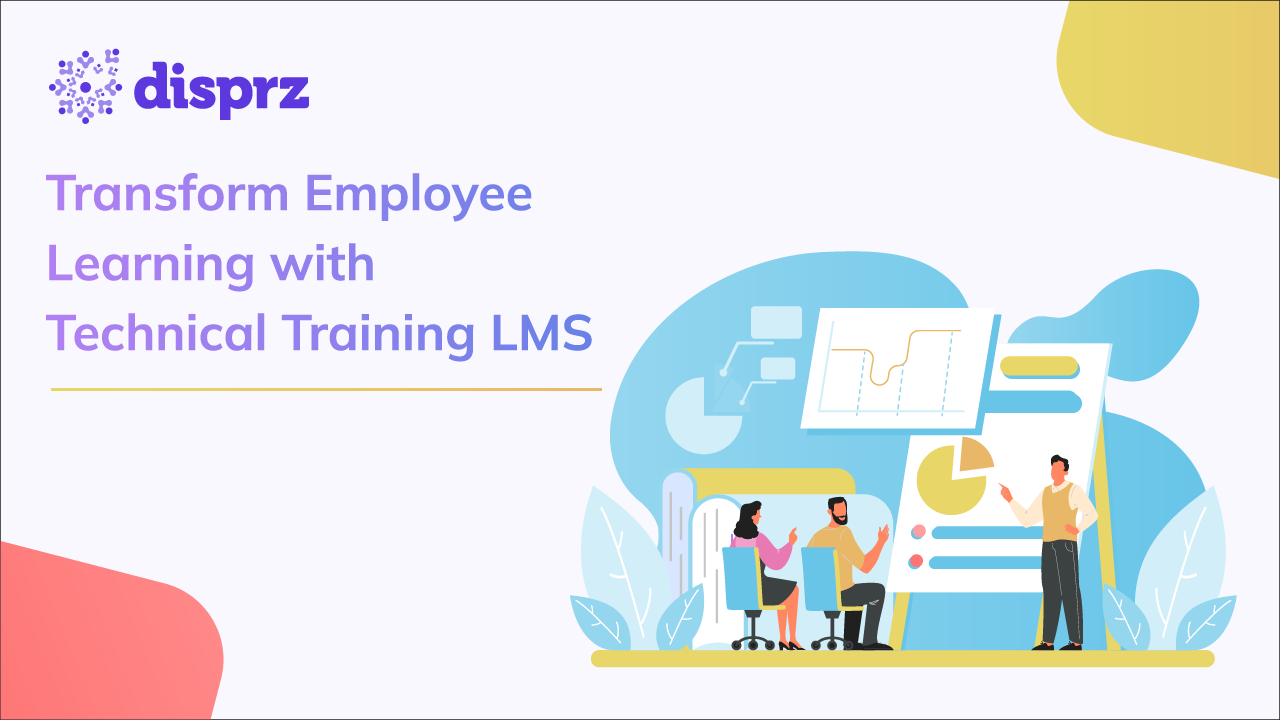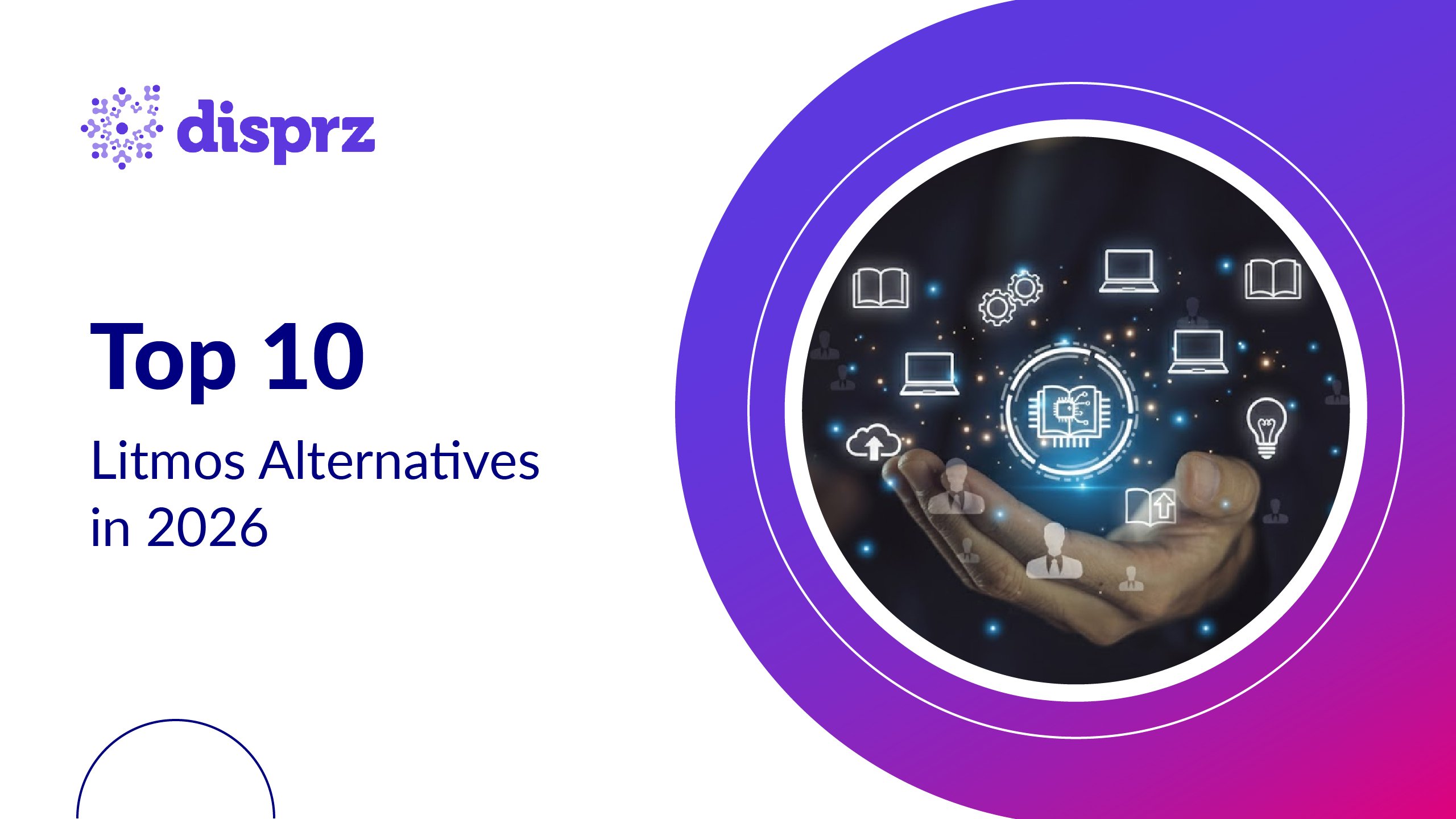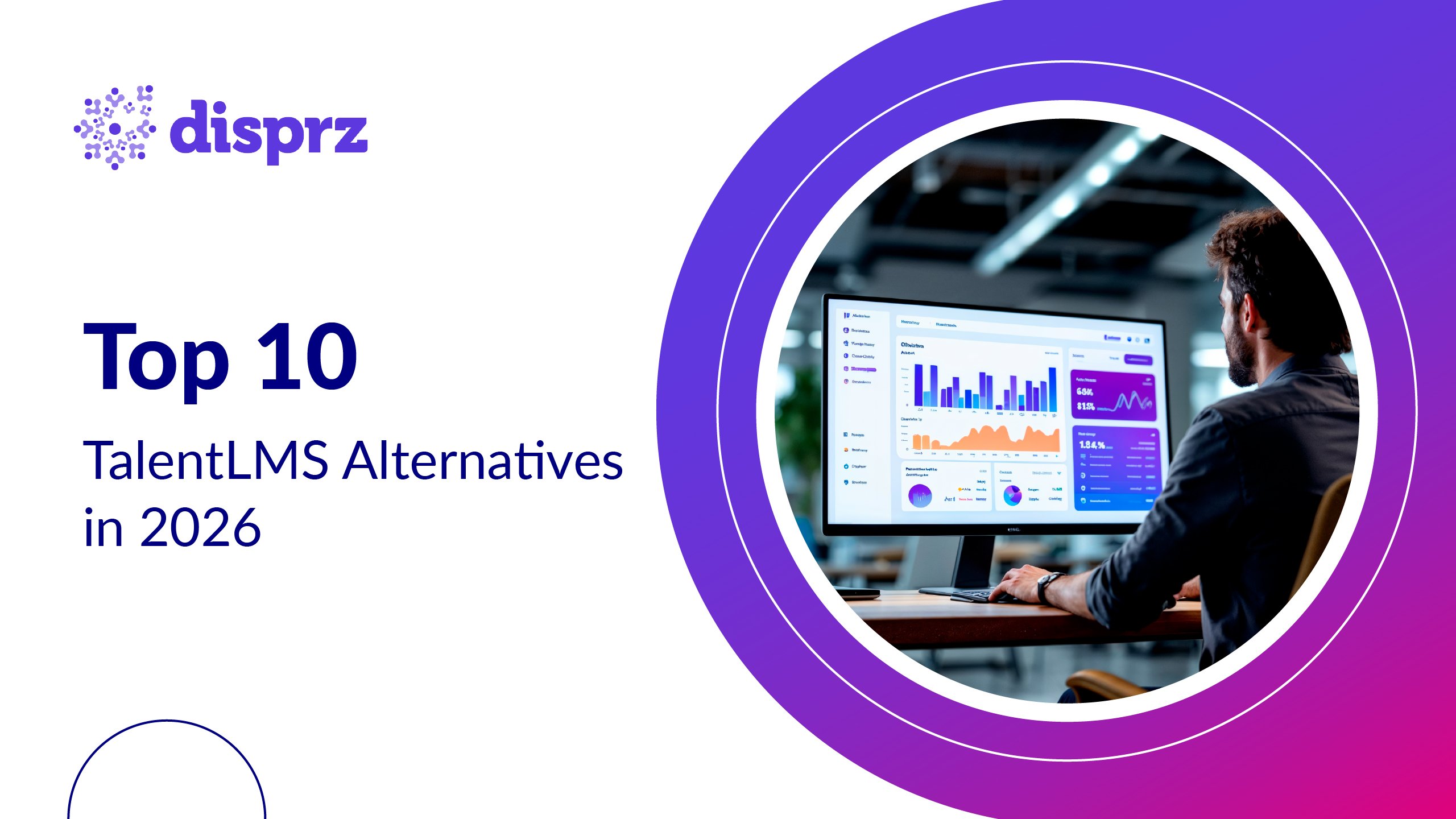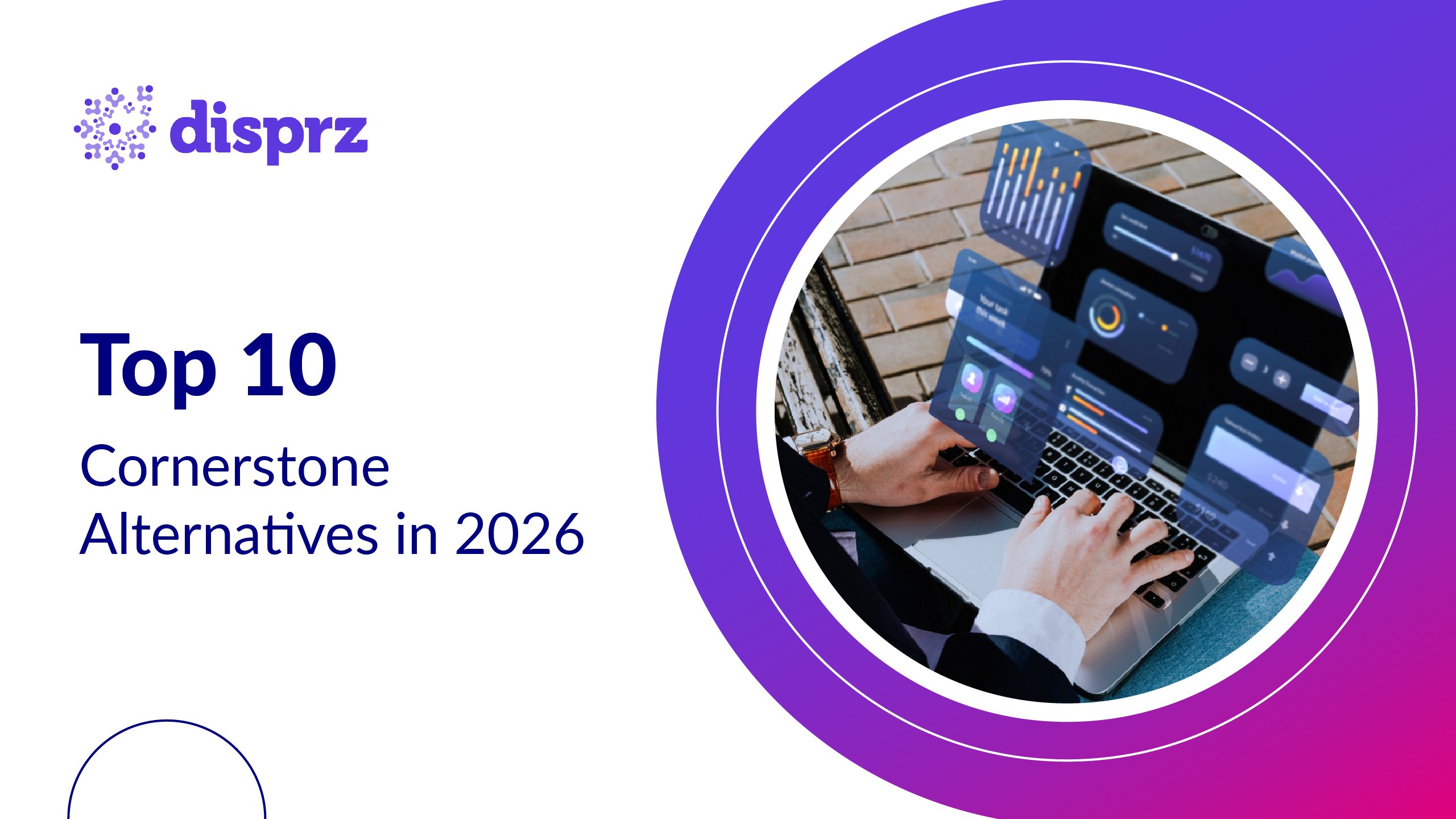In today’s fast-evolving digital landscape, technical skills have become indispensable for organizational success. From leveraging cutting-edge technologies to optimizing workflows, the need for skilled technical professionals is higher than ever. Yet, the gap between technical skills demand and supply remains a critical challenge for most Human Resources (HR) and Learning and Development (L&D) leaders.
The world of technical training, exploring its definition, types, benefits, and challenges. It also provides actionable strategies to help organizations design impactful technical training programs in 2025, leveraging modern tools like technical training platforms and Learning Management Systems (LMS) to empower their workforce.
What is Technical Training?
Technical training refers to the structured process of teaching employees the skills and knowledge needed to perform specific technical tasks or operate specialized tools and software. Unlike soft skills training, which focuses on interpersonal skills, technical training is designed to address the practical, hands-on competencies required for technical roles.
A robust technical training program equips employees to excel in their roles, adapt to technological advancements, and contribute to organizational goals. Modern solutions like technical training LMSs and platforms streamline the process, making it easier to deliver, track, and assess technical employee training initiatives.
Types of Technical Training
Effective technical training equips employees with the necessary skills to excel in their roles, drive innovation, and align with organizational goals. From hands-on learning to virtual simulations, each method caters to different needs and industries.
Here are five types of technical training programs designed to upskill your workforce and maximize impact:
1) On-the-Job Technical Training
This type involves real-time, hands-on learning in the workplace. Employees learn by performing actual tasks under the guidance of experienced mentors or trainers. It’s ideal for roles requiring practical experience, such as machine operators or software developers.
2) Classroom-Based Technical Training
This traditional approach involves in-person sessions led by subject-matter experts. It’s suitable for foundational technical jobs training or when theoretical knowledge is critical before hands-on application.
3) Online Technical Training
Leveraging a technical training platform or LMS, online training provides flexibility and scalability. Employees can access courses anytime, anywhere, making it ideal for remote teams or global organizations.
4) Simulation-Based Training
This method uses virtual environments to mimic real-world scenarios. It’s highly effective for high-stakes technical roles, such as pilots, surgeons, or cybersecurity professionals.
5) Certification Programs
Technical employment training often includes certification courses to validate skills in areas like coding, data analysis, or IT support. Certifications add credibility to an employee’s skillset and boost organizational standards.
Benefits of Technical Training
Technical training is a vital investment for organizations aiming to stay ahead in today’s competitive landscape. By equipping employees with the skills to tackle complex tasks and adapt to evolving industry demands empowers teams to drive innovation, enhance efficiency, and deliver measurable business results.

Here are the key benefits
1) Enhanced Employee Productivity
Technical training helps employees master the tools and techniques they need, reducing errors and improving efficiency.
2) Increased Job Satisfaction
Employees feel more confident and valued when equipped with the skills needed to succeed in their roles, leading to higher morale and retention.
3) Future-Proofing the Workforce
Technical training programs prepare employees for emerging technologies and industry trends, ensuring organizations remain competitive.
4) Improved Business Outcomes
Well-trained employees contribute to better project outcomes, higher customer satisfaction, and increased return on investment.
Real-World Examples of Technical Training Programs
Technical training programs are vital for equipping employees with the skills needed to keep pace with industry advancements. They empower individuals to excel in specific roles, improve productivity, and drive organizational growth.
Here are some standout examples of technical training initiatives that demonstrate innovative approaches to upskilling and reskilling the workforce:
1) Google’s IT Support Professional Certificate
Google’s program is an online technical jobs training initiative that prepares individuals for entry-level IT support roles. It focuses on skills like troubleshooting, networking, and cybersecurity.
2) Microsoft Learn
Microsoft offers a comprehensive technical training platform that provides role-based certifications for Azure, Power BI, and other tools. It’s a go-to resource for technical employee training in IT and software development.
3) Tesla’s Technician Training
Tesla’s technical employment training focuses on teaching technicians how to repair and maintain its electric vehicles. The program includes both hands-on and online training components.
4) Amazon’s Machine Learning University
Amazon’s internal tech training initiative helps employees develop advanced machine learning skills to drive innovation and efficiency within the organization.
Challenges in Implementing Technical Training
Organizations aiming to upskill their workforce often encounter significant roadblocks that hinder the effectiveness of technical training initiatives. From accurately identifying skill gaps to keeping pace with rapid technological advancements, these challenges can impede progress and reduce ROI.

Here are some common hurdles that L&D leaders need to address for successful LMS implementation
1) Skill Gap Identification
Many organizations struggle to pinpoint the exact skills their workforce lacks, leading to ineffective training efforts.
2) Resource Constraints
Developing and delivering high-quality technical training programs can be resource-intensive, especially for small to medium-sized businesses.
3) Employee Engagement
Getting employees to actively participate and complete technical training programs remains a challenge, particularly with self-paced online courses.
4) Rapid Technological Changes
Keeping training content updated with the latest tools and techniques requires continuous effort and investment.
How to Implement Technical Training?
Implementing a robust technical training program involves a structured technical skills training process that aligns with performance outcomes and learner needs:
Assess training needs and performance goals
Begin with a technical skills gap analysis. Use surveys, manager feedback, help‑desk logs, or learning analytics in LMS to pinpoint areas where skills are lacking. Establish clear, measurable outcomes tied to operational metrics; for example, reduce ticket resolution time by 20% or onboard new sales reps within 30 days.
Define desired competencies and align with L&D performance alignment
Map those gaps to specific job roles and technical competencies. Align training objectives with wider business KPIs so that L&D initiatives support organizational targets; this is critical for L&D‑performance alignment and securing stakeholder buy‑in.
Choose delivery formats
Mix online technical training (self‑paced modules, video demos, quizzes) with live instructor‑led sessions, virtual simulations, or hands‑on labs. A blended approach helps you leverage the scale of e‑learning while providing interaction and practice.
Develop or curate content
Use a combination of custom modules and off‑the‑shelf technical courses. Keep content practical, relevant, and broken into digestible micro‑learning units. Embed interactive demos or sandbox exercises that simulate real job tasks.
Leverage technology and tools
Deploy a modern LMS integrated with learning analytics to track usage, completion, assessments and on‑the‑job performance. Use tools such as Disprz or your LMS to personalize learning paths via AI.
Pilot, roll out and support
Test the program with a small group, gather feedback, iterate, then roll out broadly. Encourage managers to reinforce learning on the job, setting aside time for practice.
Measure results and iterate
Use LMS analytics and business metrics (productivity, error rates, help desk volume) to assess effectiveness. Continuously refine content, formats, and the training process to maintain impact.
How Can DAPs Improve Application-Based Technical Training?
Digital adoption platforms in training transform software onboarding and continuous learning into seamless, in‑context experiences:
-
Contextual guided support: DAPs provide step‑by‑step walkthroughs and tooltips embedded directly into the application, guiding users through workflows at the moment of need. This makes application training relevant, interactive, and frictionless; a huge upgrade over static documentation.
-
On‑demand assistance: Instead of users attending training sessions and returning to software cold, DAPs for software training deliver guidance in real‑time, reducing help‑desk requests and minimizing frustration.
-
Personalized learning: DAPs segment users by role, experience or behavior and adapt training content accordingly. So new hires get basics, while advanced users see advanced feature walk‑throughs. This role‑based tailoring increases effectiveness.
-
Built‑in analytics: DAPs capture detailed user behavior and usage patterns, complementing learning analytics in LMS. These insights reveal where users struggle, which features are under‑utilized, and where training needs reinforcement. Organizations can then refine both LMS courses and in‑app guidance continuously.
How to Design an Effective Technical Training Program 2025
Creating a successful technical training program requires a strategic approach that aligns with organizational goals while addressing employee development needs. By focusing on structured planning, leveraging advanced tools, and incorporating modern learning methodologies, businesses can build programs that drive measurable outcomes and foster long-term growth.
1) Conduct a Skills Gap Analysis
Identify the specific technical skills your organization needs and compare them to the existing competencies of your workforce. This will help prioritize training needs.
2) Leverage a Technical Training LMS
Invest in robust technical training software or LMS to deliver, manage, and track your training programs efficiently. These platforms often include analytics tools to measure progress and impact.
3) Incorporate Microlearning
Break down training content into bite-sized modules that are easier to consume and retain. This approach boosts engagement and knowledge retention.
4) Blend Learning Methods
Combine on-the-job training, online courses, and classroom sessions to cater to diverse learning preferences and maximize effectiveness.
5) Focus on Real-World Applications
Design training scenarios that reflect actual job tasks, ensuring employees can immediately apply what they learn.
6) Regularly Update Training Content
Keep your technical training programs relevant by incorporating the latest industry trends, tools, and technologies.
The Future of Technical Training
As we move into 2025, technical training is set to become even more sophisticated with advancements in Artificial Intelligence (AI), Augmented Reality (AR), Virtual Reality (VR), and automation.
Here’s what to expect
1) AI-Powered Personalization
Technical training software will use AI to deliver personalized learning experiences tailored to individual skill levels and career goals.
2) Immersive Learning with AR/VR
Augmented and virtual reality will create engaging, hands-on training scenarios that simulate real-world challenges.
3) Data-Driven Insights
Advanced analytics will enable organizations to measure training effectiveness and link it directly to business outcomes.
4) Collaboration with Industry Experts
Partnerships with tech leaders will help organizations access cutting-edge content and certifications.
How Disprz Supports End-to-End Technical Training
At Disprz, the platform is designed to address every phase of the technical skills training process. From initial skills assessment and personalized learning platform to online technical training and blended learning, Disprz ensures delivery flexibility. Through integrated learning analytics, L&D leaders can track how learners engage with content, monitor outcome metrics, and tie learning back to performance goals.
For application‑based training, Disprz supports native integration with digital adoption platform capabilities, delivering in-app guidance, walkthroughs, and contextual learning, putting help exactly where learners need it. By combining content delivery, performance alignment, and insights in a single platform, Disprz empowers businesses with a holistic solution for building technical capability at scale.
FAQs
1) How long should a technical training program last?
The optimal duration depends on the scope and context. A basic onboarding module might take 2–4 weeks (including self‑paced learning + practice), whereas a multi‑skill upskilling program could span 8–12 weeks. It's best to break content into short micro‑learning units (15–30 minutes each) and deliver over a few sessions; this keeps momentum high and minimizes disruption to work.
2) What are the most effective formats for technical training?
Blended formats tend to be most effective: combine online technical training (self‑paced e‑modules, quizzes, simulations) with live virtual or in‑person instructor sessions, followed by real‑world practice. For software use, integrating DAPs for software training provides in‑app guidance that reinforces learning and makes adoption seamless.
3) How do I align technical training with performance goals?
Start with identifying performance goals; for example, reduce onboarding time, improve system error rates, and increase adoption. Then define the competencies needed to achieve them. Design training objectives that directly map to those outcomes. Use LMS analytics and business data to monitor progress against goals. Routinely review metrics, tweak training content or delivery, and maintain a feedback loop between L&D and business stakeholders.









